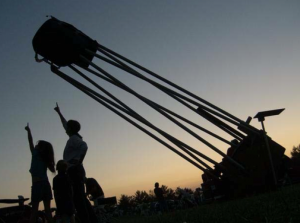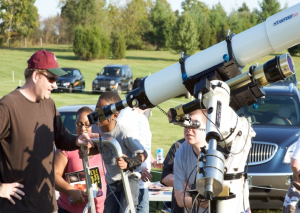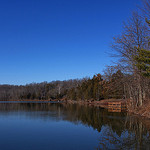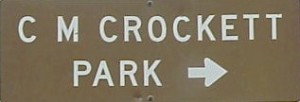The Quadrantids meteor shower can yield as many as 40 meteors per hour, radiating from the constellation Bootes. It peaks this year on the night of the 3rd and morning of the 4th. Bummer though: this will occur during a nearly full moon, so all but the brightest meteors will be washed out. Still, looking up at the sky isn’t a bad way to start the new year!

A nasty wintery mix of rain, sleet, freezing rain and/or snow tomorrow afternoon and evening isn’t suitable for telescopes, astronomers or the general public.
Hoping for Clear skies for future dates,
Tree Greenwood
Crockett Park Site Coordinator
Please read the C.M. Crockett Page for park details.

Please read the C.M. Crockett Page for park details. Details will be updated for the Messier Marathon too!

Head over to the Astronomy Day page for more information.
The Lyrids is an average shower, usually producing about 20 meteors per hour at its peak. It is produced by dust particles left behind by comet C/1861 G1 Thatcher, which was discovered in 1861. The shower runs annually from April 16-25. It peaks this year on the night of the night of the 22nd and morning of the 23rd. These meteors can sometimes produce bright dust trails that last for several seconds. The first quarter moon will set shortly after midnight, leaving dark skies for the what could be a good show. Best viewing will be from a dark location after midnight. Meteors will radiate from the constellation Lyra, but can appear anywhere in the sky.
http://www.seasky.org
The Eta Aquarids is an above average shower, capable of producing up to 60 meteors per hour at its peak. Most of the activity is seen in the Southern Hemisphere. In the Northern Hemisphere, the rate can reach about 30 meteors per hour. It is produced by dust particles left behind by comet Halley, which has known and observed since ancient times. The shower runs annually from April 19 to May 28. It peaks this year on the night of May 6 and the morning of the May 7. The waning gibbous moon will block most of the fainter meteors this year, but you should be able to catch quite A few good ones if you are patient. Best viewing will be from a dark location after midnight. Meteors will radiate from the constellation Aquarius, but can appear anywhere in the sky.
http://www.seasky.org



